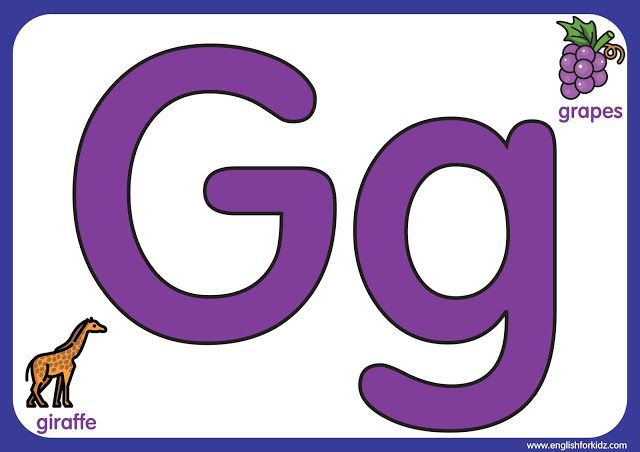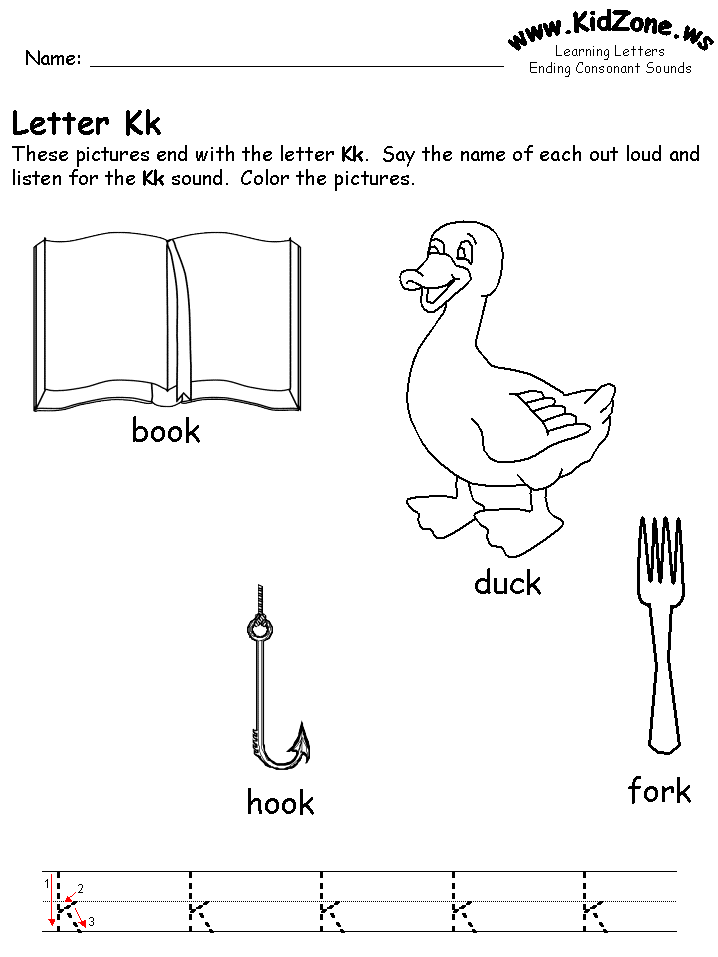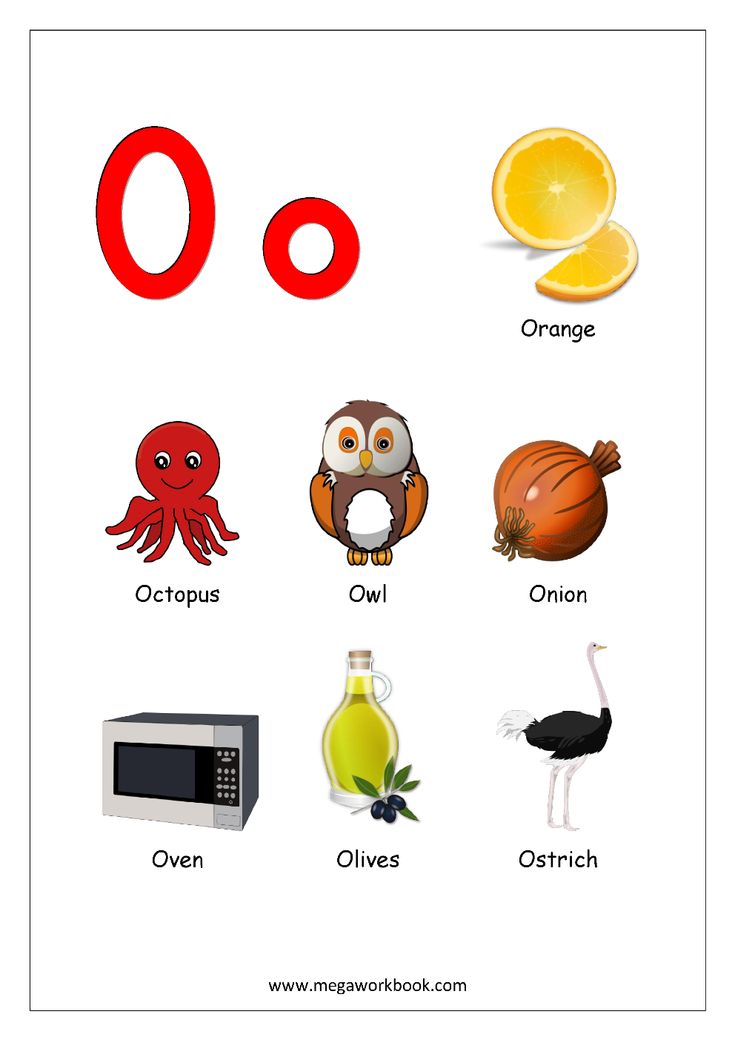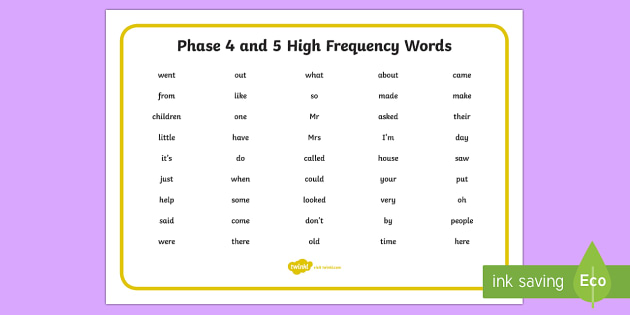Change of the seasons
Changing seasons | National Oceanic and Atmospheric Administration
Focus areas:
Education
Topics:
climate outlooks
seasons
education
In many parts of the United States, you might change your wardrobe with the seasons, grabbing a heavy coat in winter, while wearing only a light t-shirt in summer. Although ecosystems, plants, and animals cannot adjust their attire quite so easily, they have evolved to make changes that help them survive seasonal conditions caused by the rotation of the Earth around the sun.
>
Do you know the difference between meteorological and astronomical seasons? Astronomical seasons are based on the position of the Earth in relation to the sun, whereas meteorological seasons are based on the annual temperature cycle. The Earth’s annual trip around the sun forms the basis for the astronomical calendar in which seasons are defined by two solstices and two equinoxes.
The Earth is tilted 23.5 degrees on its axis of rotation, and how the North Pole is oriented toward or away from the sun determines two of these astronomical dates. At the winter solstice, the North Pole is tilted away from the sun, whereas at the summer solstice, the North Pole is tilted toward the sun. The equinoxes occur halfway between these events when the sun’s path is aligned with the Earth’s equator. The dates shown describe the astronomical seasons for the Northern Hemisphere in 2022; the exact dates vary slightly from year to year. Meteorological seasons are broken down into groupings of three months in our civil calendar based on the annual temperature cycle. We generally think of winter as the coldest time of the year and summer as the warmest time of the year, with spring and fall being the transition seasons. In the Southern Hemisphere, the seasons are reversed where summer occurs when the South Pole is oriented towards the sun, and winter happens when the South Pole faces away.
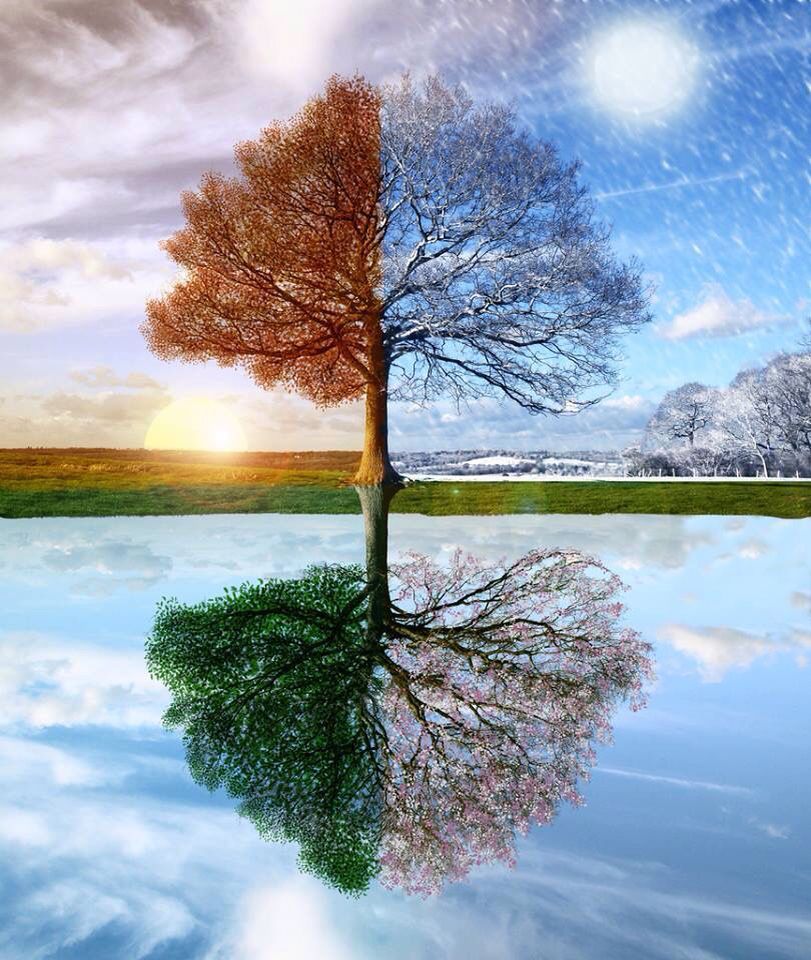 (NOAA Office of Education/Kaleigh Ballantine)
(NOAA Office of Education/Kaleigh Ballantine)
Download Image
Click to see this graphic for the Southern Hemisphere
Do you know the difference between meteorological and astronomical seasons? Astronomical seasons are based on the position of the Earth in relation to the sun, whereas meteorological seasons are based on the annual temperature cycle. The Earth’s annual trip around the sun forms the basis for the astronomical calendar in which seasons are defined by two solstices and two equinoxes. The Earth is tilted 23.5 degrees on its axis of rotation, and how the North Pole is oriented toward or away from the sun determines two of these astronomical dates. At the winter solstice in the Southern Hemisphere, the South Pole is tilted away from the sun, whereas at the summer solstice, the South Pole is tilted toward the sun. The equinoxes occur halfway between these events when the sun’s path is aligned with the Earth’s equator.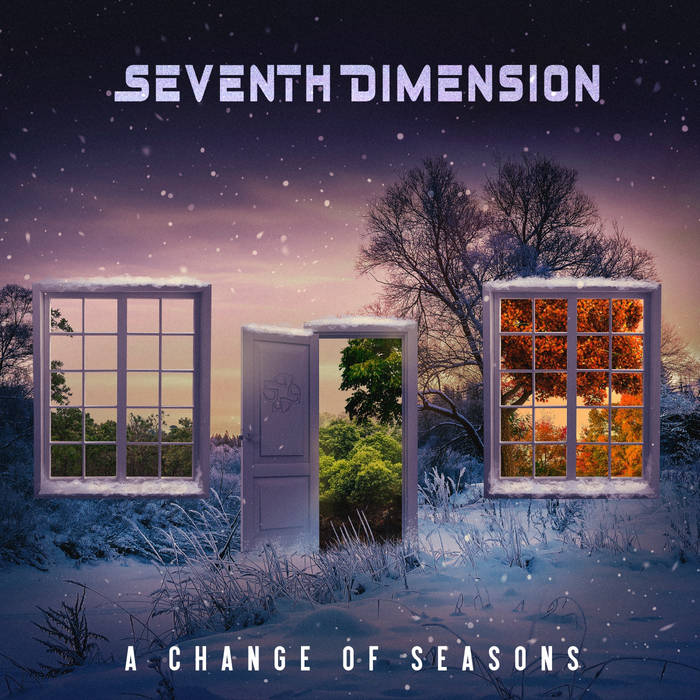 The dates shown describe the astronomical seasons for the Southern Hemisphere in 2022; the exact dates vary slightly from year to year. Meteorological seasons are broken down into groupings of three months in our civil calendar based on the annual temperature cycle. We generally think of winter as the coldest time of the year and summer as the warmest time of the year, with spring and fall being the transition seasons. (NOAA Office of Education/Kaleigh Ballantine)
The dates shown describe the astronomical seasons for the Southern Hemisphere in 2022; the exact dates vary slightly from year to year. Meteorological seasons are broken down into groupings of three months in our civil calendar based on the annual temperature cycle. We generally think of winter as the coldest time of the year and summer as the warmest time of the year, with spring and fall being the transition seasons. (NOAA Office of Education/Kaleigh Ballantine)
Download Image
Why do we have seasons?
The Earth is tilted 23.5 degrees on its axis, which affects the distribution of the sun’s energy across the surface of the planet. As the Earth orbits the sun every 365 ¼ days, the axis is always pointing in the same direction into space, with the North Pole toward Polaris, the North Star. Around June 22, the Northern Hemisphere is angled towards the sun, and receives the most direct radiation and the most energy. This is the start of astronomical summer in the Northern Hemisphere and winter in the Southern Hemisphere.
Six months later, in December, the Earth has completed half a revolution around the sun. The Northern Hemisphere is now angled away from the sun and receives less energy than the Southern Hemisphere; this is the beginning of winter in the Northern Hemisphere and summer in the Southern Hemisphere. From north to south, the results of the distribution of solar energy can be seen in changing vegetation, animal behaviors, temperatures, and day length.
Meteorological versus astronomical seasons
You may have noticed that meteorologists and climatologists define seasons differently from “regular” or astronomical spring, summer, fall, and winter.
Astronomical and meteorological seasons
Meteorologists and climatologists use a slightly different time scale for meteorological seasons than for astronomical winter, spring, summer, and fall. Why do meteorological and astronomical seasons begin and end on different dates? In short, it’s because the astronomical seasons are based on the position of the Earth in relation to the sun, whereas the meteorological seasons are based on the annual temperature cycle and help scientists track climate and weather trends.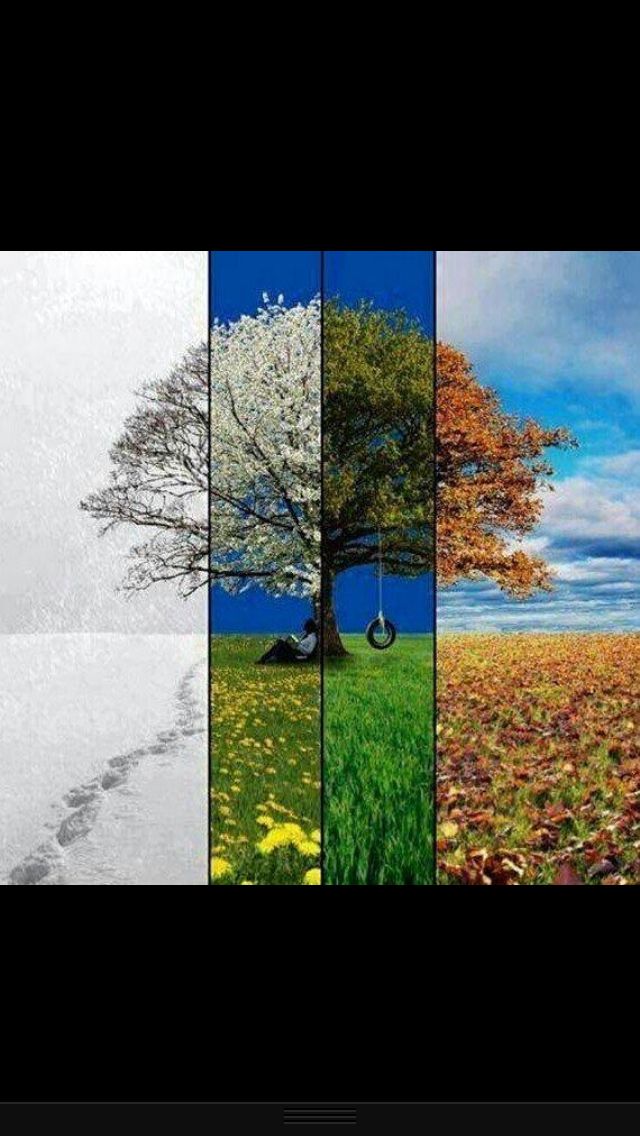
Spring into science
Celebrate the season of spring with NOAA! From new graphics to educational resources, spring into science with us and check out our content.
Seasonal effects
Seasonal changes in precipitation and temperature affect soil moisture, evaporation rates, river flows, lake levels, and snow cover. Leaves fall and plants wither as cold and dry seasons approach.
These changes in vegetation affect the type and amount of food available for humans and other organisms. Animals in temperate and polar regions must find alternate food sources, move to warmer locations, or hibernate.
Beyond the big four
Though in the United States, we often think of the seasons as winter, spring, summer, and fall, but there are many different ways seasons change throughout the world, and even within the United States. Can you think of other annual climate events or ways to define seasons?
Groundhog Day forecasts and climate history
Even though he’s been forecasting since 1887, Punxsutawney Phil’s track record for the entire country isn’t perfect.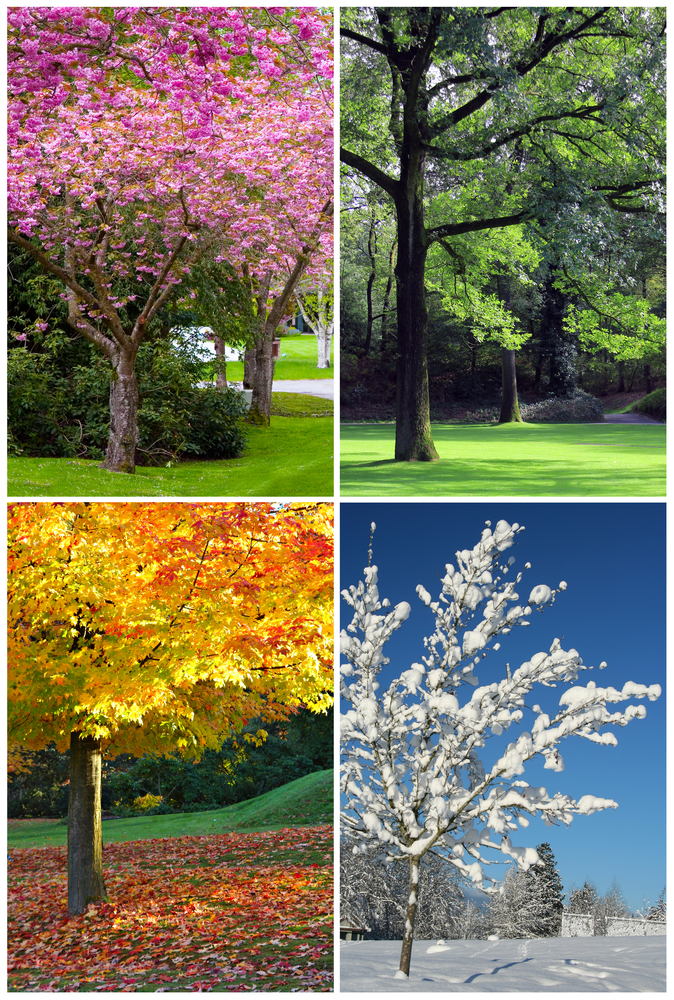 To determine just how accurate he is, we’ve compared U.S. national temperatures with Phil’s forecasts. On average, Phil has gotten it right 40% of the time over the past 10 years.
To determine just how accurate he is, we’ve compared U.S. national temperatures with Phil’s forecasts. On average, Phil has gotten it right 40% of the time over the past 10 years.
EDUCATION CONNECTION
What are some ways that animals adapt to seasonal changes in your region? How does this compare to other areas? How do people adjust to the seasonal changes in their region? How do the seasons impact the use of energy in your community? The resources in this collection help educators encourage their students connect their own observations of the seasons to concepts in Earth science and biology.
Seasons — Seasons of Change
Every time a change occurs in your life, you embark on a transition journey illustrated here with the seasons. Follow the spiral to discover the practical steps you can take to grow through life's inevitable ups and downs.
Imagine that this is an upward moving spiral that continues forever. Think of these Seasons as a metaphor for the phases of any transition journey. These Seasons may, or may not, match the seasons unfolding outside your window.
These Seasons may, or may not, match the seasons unfolding outside your window.
In any given transition, you move from Summer - a time when all is going well in your life - through Fall, Winter, Spring up to a new level of Summer.
Most of us have grown up believing that to be successful, we must remain in Summer at all times. But then, any change that takes us off our line of success is a threat to be avoided at all costs. There is another way.
Seasons of Change Spiral
If we see change as a naturally occurring event - much like the change of seasons - then we can embrace change as a gift and an invitation to improve and enhance our lives.
To grow through life's inevitable ups and downs, we must move through each season in turn.
Fall - Sensing a Shift in Your Life and Preparing for What's to Come
Early Winter - Retreating, Reflecting and Reconnecting with Your Deep Nature
Winter Solstice - Catching Sparks of Hope in the Darkness
Late Winter - Exploring and Experimenting to Firm Up Your Vision for the Future
Spring - Bursting into Bloom and Putting Your Plan into Action
Summer - Celebrating Your Harvest
Do you have a sense of where you are on the Seasons of Change Spiral? Read the summaries below to gain a sense of the purpose of each Season.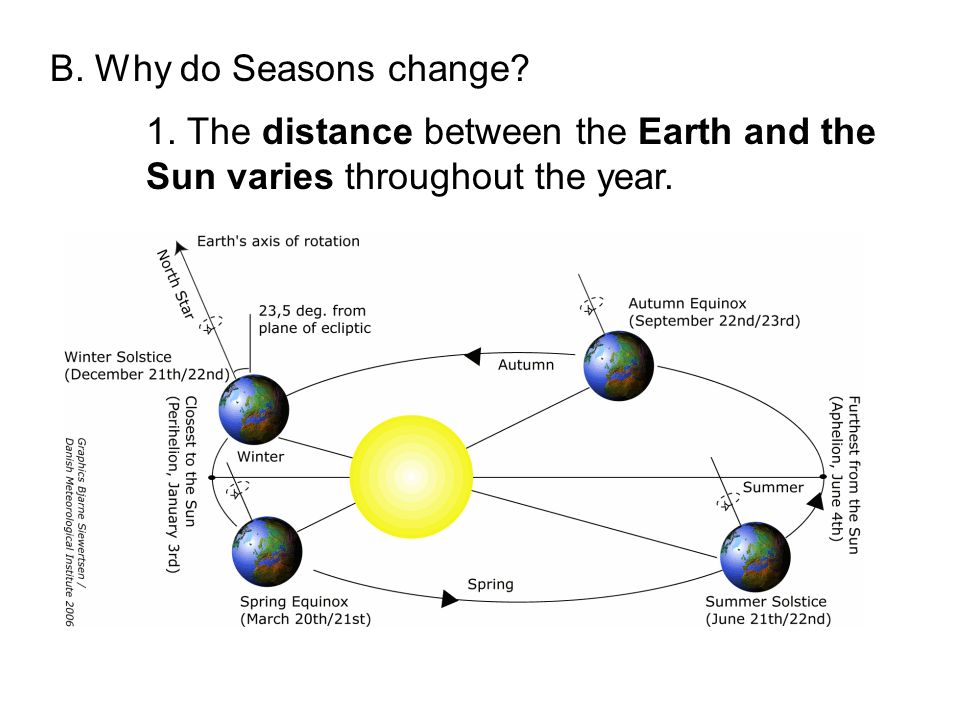 The first line of each summary describes how you are likely to feel while in each season.
The first line of each summary describes how you are likely to feel while in each season.
Deepen your exploration of the seasons that resonate with where you are in the journey.
Fall: Time of Sensing a Shift
You are likely to be in Fall if you are getting news of changes or you are worrying while you wait for news.
While you are in Fall, focus your attention on:
Acknowledging that changes are happening in your life
Getting the support you need to make it through
Creating a safe refuge where you can weather out the storms ahead
At the same time, do what you can to avoid these detours:
Denying the changes that are occurring in your life
Jumping at the first option that shows up
Being a lone ranger and trying to do it all alone
Early Winter: A Time of Retreating and Reflecting
You are likely to be in Early Winter if you are feeling tired, feeling confused about all or part of your life, or trying to avoid social events.
While you are in Early Winter, focus your attention on:
Renewing yourself
Creating quiet time for yourself
Reflecting on your situation, your desires, and your ideal
At the same time, do what you can to avoid these detours:
Staying so busy you can't focus inward
Starting something new so you won't have to feel the chaos within
Forcing yourself to be happy when you aren't
Winter Solstice: Catching Sparks of Hope in the Darkness
You are likely to be experiencing your Winter Solstice if you feel like you are in the dark and/or feeling the imminent birth of an insight.
During your Winter Solstice time, focus your attention on:
Turning things upside down to look at your life from new perspectives
Drawing a line in the sand and saying "enough is enough"
Telling a new story about your past to find new doors to the future
At the same time, do what you can to avoid these detours:
Avoiding your quiet time
Being in a toxic environment
Being wedded to one solution
Late Winter: A Time of Exploring and Experimenting to Firm Up Your Vision for the Future
You are likely to be in Late Winter if you are catching new insights and seeing glimmers of Spring.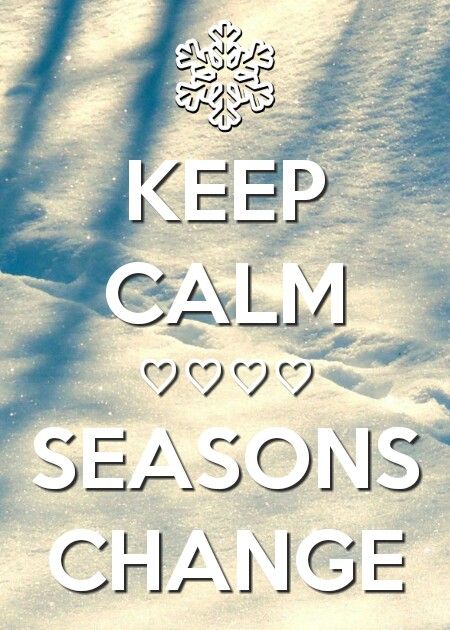
While you are in Late Winter, focus your attention on:
Following your insights wherever they take you
Clearing out the old in your space, your to-do list, your relationships, and your mind
Experimenting and exploring to firm up your vision for the future
At the same time, do what you can to avoid these detours:
Ignoring your insights
Doing what you've always done because it's more comfortable than stretching
Charging ahead without a sense of where you are going
Spring: A Time of New Growth
You are likely to be in Spring if you are bursting with energy and struggling with your reentry into your life.
While you are in Spring, focus your attention on:
Trusting your own timing
Birthing what's new in your life
Blossoming fully into the new you
At the same time, do what you can to avoid these detours:
Summer: A Time of Celebrating Your Harvest
You are likely to be in Summer if you are feeling clear and confident and your life is abundant.
While you are in Summer, focus your attention on:
Allowing what is new in your life to ripen in its own time
Savoring your success
Celebrating and playing
At the same time, do what you can to avoid these detours:
Raising your definition of success so you never succeed
Backing down from what's going well in your life
Being a worry wart about what's to come in the future
Where to Go Next to Find Your Path Forward
Whether you are in the middle of a life transition or a work-related transition, it's likely you are feeling overwhelmed and confused.
Understanding where you are on your journey, where to direct your energy, and how you are likely to feel in each season can be reassuring. The following resources provide additional information about each season and describe activities you can take part in to facilitate your journey through the seasons.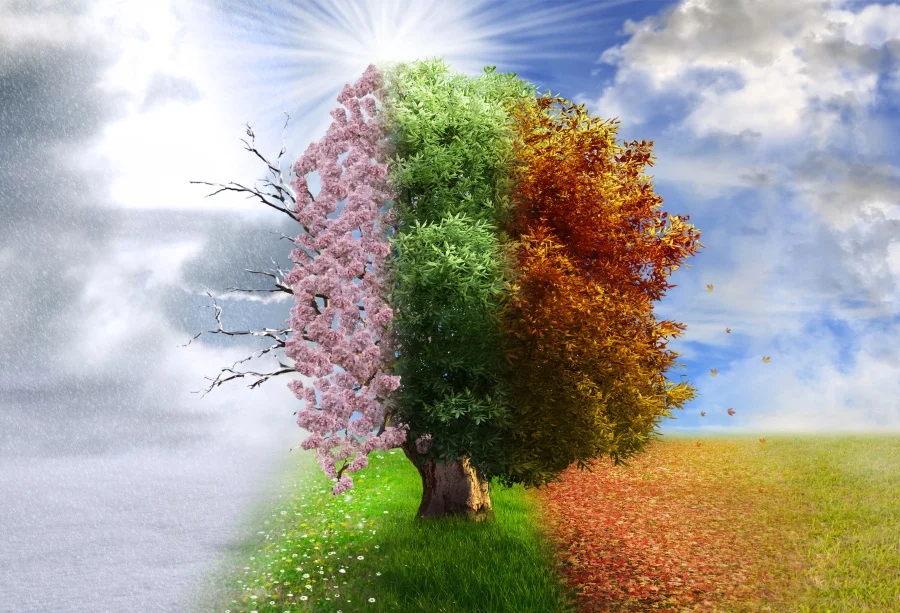
If you are experiencing changes in your relationships, family, health, home, spiritual life, or finances, check out our Life Transition Tips.
If changes happening in your job, career focus, workplace, business, industry, or profession, check out our Career Change Tips.
If You Are a Change Catalyst
Do you help clients create changes they want and navigate changes they never expected to face? Check out these resources.
If you are ready to flourish as a Change Catalyst — personally, professionally, and financially — visit our sister site, Flourish as a Change Catalyst. There you will find information about our:
Change Catalyst Network,
Transition and clarity training programs,
Mentoring support for Change Catalysts starting a new business or seasoned Change Catalysts reimagining their work or business in light of the times.

About the Seasons of Change
A couple of months after my father's death, as I sat at a stop light, I noticed that a tree that had been bare when he died was suddenly in full blossom. I remembered saying to myself "I hope I blossom again too someday."
As I turned to nature more and more for solace and support, I began to discover new insights about life transitions. I realized that nature changed incrementally every day in response to the changing seasons. I began to wonder what I could learn about navigating times of change by simply watching how animals and plants respond to the change of season.
As I listened to nature's wisdom I began to see my journey as a natural process of healing and growing. Bit by bit, as I made proactive choices about how I wanted to live my life, my life turned from one of grief and sadness to one of joy and engagement.
Five years later, after leaving my corporate job to start my own business, I created the Seasons of Change to support others navigating times of change in their own lives.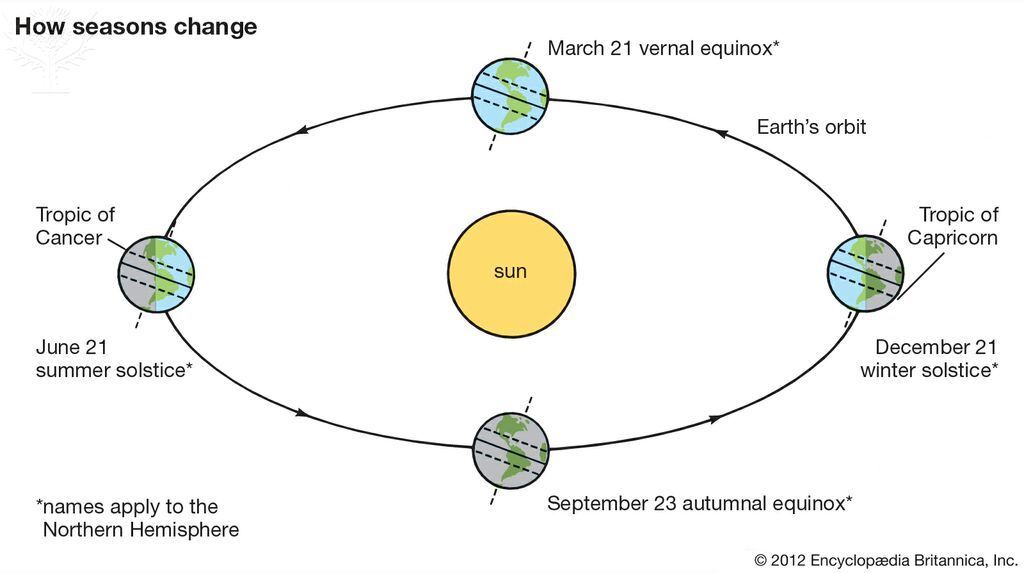 Over the last few decades I've been honored to share these insights and watch as my clients step into a whole new world as they heal from difficult events and choose to create the life they really want.
Over the last few decades I've been honored to share these insights and watch as my clients step into a whole new world as they heal from difficult events and choose to create the life they really want.
Read more about the Seasons of Change in my book of the same title.
If you are a professional working with clients in transition, join more than 300 coaches who have taken the Seasons of Change training to use the model in their work with clients in transition. (The course description is on our sister site: FlourishasaChangeCatalyst.com)
Astronomical seasons
The four astronomical seasons that make up the year: spring, summer, autumn and winter begin when the center of the Sun passes one of the points on the ecliptic: the spring and autumn equinoxes, winter and summer solstices.
The main reason for the change of seasons is the tilt of the axis of our planet in relation to the plane of the ecliptic, that is, the plane of rotation of the Earth around the Sun.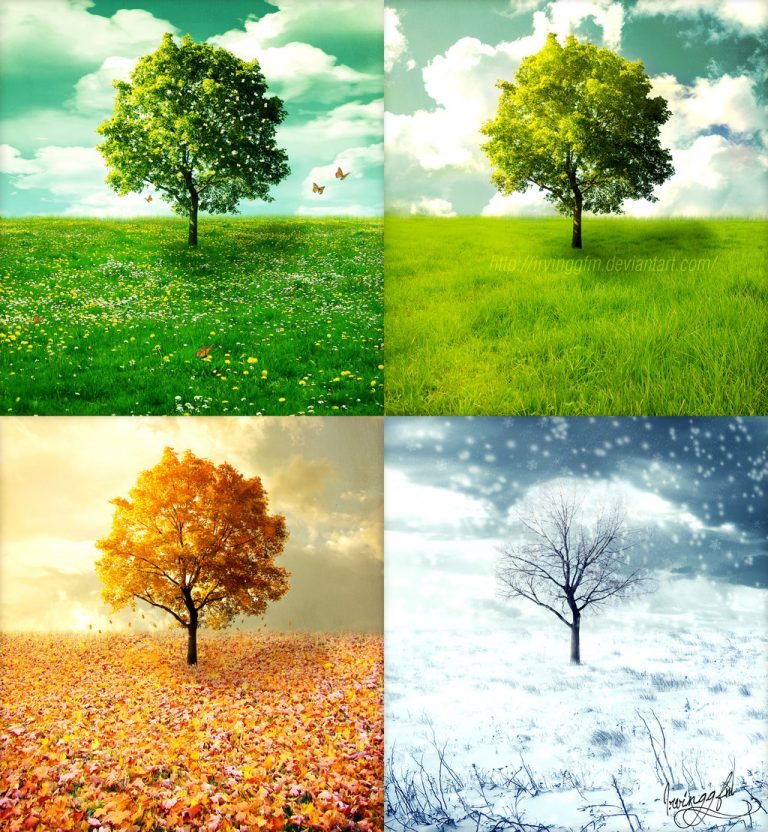 The Earth's axis is tilted from the plane of the ecliptic by 23.44 degrees. If this angle were equal to zero, the seasons would never change on the planet, the length of day and night would be the same, and the Sun would rise above the horizon to the same height throughout the year.
The Earth's axis is tilted from the plane of the ecliptic by 23.44 degrees. If this angle were equal to zero, the seasons would never change on the planet, the length of day and night would be the same, and the Sun would rise above the horizon to the same height throughout the year.
The change of seasons is not only on Earth. Consider the planets of the solar system.
The nearest planets to the Sun, Mercury and Venus, are not suitable examples, since these planets have almost no inclination of the axis of rotation to the ecliptic. Mercury is 0.01 degrees, and Venus is 177 degrees (it is upside down), which can be equated to 3 degrees.
Mars is similar to our planet in many ways. The inclination of the axis of rotation of Mars relative to the plane of its orbit is 25.2 degrees, which is only slightly more than the earth. Seasonality is similar to Earth, but a little more pronounced. When observed at different times of the year, you can see how the Martian “caps” at the poles change, melting occurs.
Jupiter's axis of rotation is tilted only 3 degrees with respect to the plane of the orbit. On the gas giant, the climate is not seasonal and is constant throughout the year.
The tilt of Saturn's axis of rotation is 29 degrees, so the change of seasons on this planet is characterized by more pronounced changes in the amount of sunlight than on Earth, and, consequently, temperature. All four seasons on Saturn last approximately 7 years. Since the entire year of the ringed planet lasts 29earth years. Depending on the time of year, Saturn can change its color. In the year when the automatic interplanetary station "Cassini" first approached the planet, it was winter in the northern hemisphere and this part of Saturn had a blue tint. Now it is summer in the northern hemisphere. This phenomenon occurs due to the intensity of ultraviolet radiation, in winter it decreases, in summer it rises. Well, the most noticeable fact of the change of seasons on Saturn is, of course, its rings.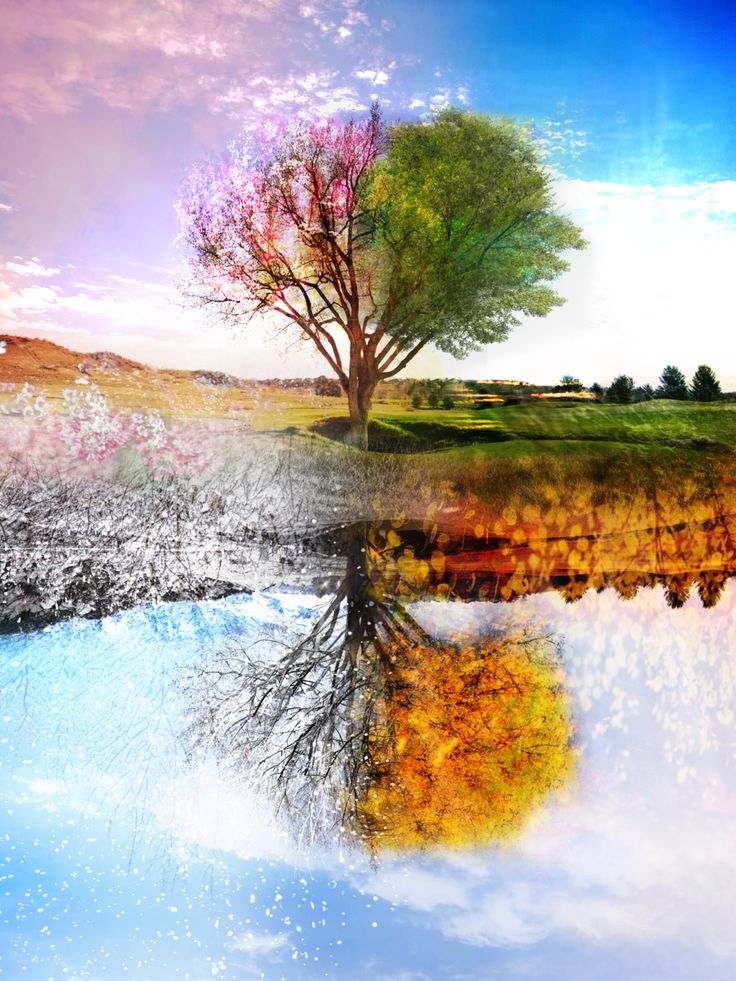 It is they who, for an observer from Earth, will quickly answer the question: “What season is it now on Saturn?” The inclination varies depending on the time of year, since the rings lie in the plane of the planet's equator, which means they have an inclination to the ecliptic equal to 29degrees. When it is summer in the northern hemisphere, the planet turns the northern hemisphere and its rings towards the Sun, and therefore towards the Earth, when it is winter, we see the southern hemisphere. During spring and autumn, the rings become so narrow for the observer that it is difficult to see them. At the equinoxes, Saturn turns into a planet without rings. They disappear.
It is they who, for an observer from Earth, will quickly answer the question: “What season is it now on Saturn?” The inclination varies depending on the time of year, since the rings lie in the plane of the planet's equator, which means they have an inclination to the ecliptic equal to 29degrees. When it is summer in the northern hemisphere, the planet turns the northern hemisphere and its rings towards the Sun, and therefore towards the Earth, when it is winter, we see the southern hemisphere. During spring and autumn, the rings become so narrow for the observer that it is difficult to see them. At the equinoxes, Saturn turns into a planet without rings. They disappear.
The angle of inclination of the axis of rotation of Uranus is 97.86 degrees - it lies on its side, so the planet has a specific change of seasons, not similar to our planet.
On Neptune, the axis of rotation is deviated by 30 degrees, so the change of seasons here is similar to Earth, but the distance of the planet to the Sun makes its own adjustments. A year on Neptune is almost 165 Earth years, and each season lasts 41 years. Summer began in 2005 in the southern hemisphere and will last until 2046.
A year on Neptune is almost 165 Earth years, and each season lasts 41 years. Summer began in 2005 in the southern hemisphere and will last until 2046.
Does the sun always rise in the same place? No. With the change of seasons, the direction to the point of sunrise also changes. On the winter solstice, the sunrise and sunset points are closest to the south direction, and on the summer solstice they are closest to the north.
Days of equinoxes and solstices
Astronomical spring has arrived on March 20, 2020 at 10:49 local time. At this moment, the center of the solar disk will cross the celestial equator and move from the southern celestial hemisphere to the northern one. The height of the Sun on the celestial sphere and, accordingly, the daylight hours will increase until the onset of astronomical summer. This day is called the spring equinox. The fact that the equinox came so early is not surprising - it was a leap year.
June 21, 2020 at 4 hours 44 minutes - astronomical summer. The sun, moving along its path, will move as far as possible from the celestial equator and reach the northernmost point. This day is called the solstice.
The sun, moving along its path, will move as far as possible from the celestial equator and reach the northernmost point. This day is called the solstice.
September 22, 2020 at 20:31 - astronomical autumn. The sun on this day, moving along its path in the celestial sphere, crosses the equator and passes from the northern hemisphere to the southern. This day is called the autumnal equinox: day equals night. After that, the night in the northern hemisphere of the Earth becomes longer than the day, and in the southern hemisphere of the Earth the nights become shorter. This astronomical season will continue until December 21st.
The days around the autumnal equinox are favorable for astronomers and astronomers. The long night and relatively warm weather make it possible to carry out astronomical observations comfortably from evening to morning, about 12 o'clock.
During the equinoxes, the terminator on Earth - the line separating the day and night sides of the planet - is vertical and connects the north and south poles.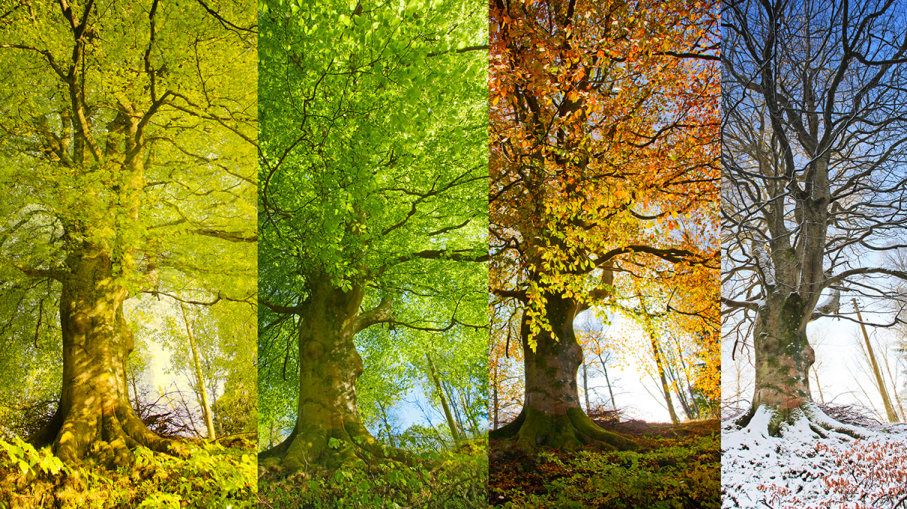 This can be seen in the photographs of our planet, which are made by artificial satellites.
This can be seen in the photographs of our planet, which are made by artificial satellites.
December 21, 2020 at 17 hours 2 minutes - winter solstice. The sun, moving along its path, will move as far as possible from the celestial equator and reach the southernmost point. The northern hemisphere has the shortest day, while the southern hemisphere has the longest. This is the most favorable period for observing various celestial objects in the night sky, but winter cold and frequent inclement weather (in central Russia) do not allow full-fledged observations.
The material was prepared by Victoria Damm, UC Planetarium
Sources: astronomical calendar for the 2019/2020 academic year. Issue 70;
Stellarium program.
Why the seasons change | First day of summer | When spring begins
If you have ever wondered why the seasons change on Earth, our article will be useful to you. We will talk about what approaches exist to determine the seasons, and also explain why the seasons succeed each other.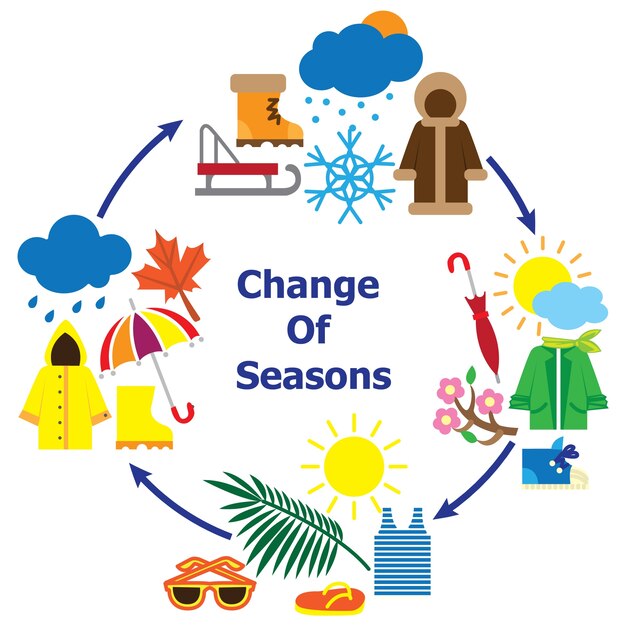
Contents
- How many seasons are there in a year?
- When are the seasons?
- Why does the seasons change on Earth?
- How do the seasons differ in different hemispheres?
- Are there seasons on other planets?
How many seasons are there in a year?
Season or season is a period of the year characterized by certain weather conditions, average daily temperature and length of daylight hours. The number of seasons in a year depends on your geographical location and the cultural characteristics of your region. In temperate and circumpolar regions, 9 are usually distinguished0066 four seasons : spring, summer, autumn and winter.
In some South Asian countries, the year is divided into six seasons instead of four. For example, the Indian calendar has the following seasons: spring, summer, rainy season, autumn, early winter and late winter. In many tropical regions, there are only two seasons : the rainy season and the dry season.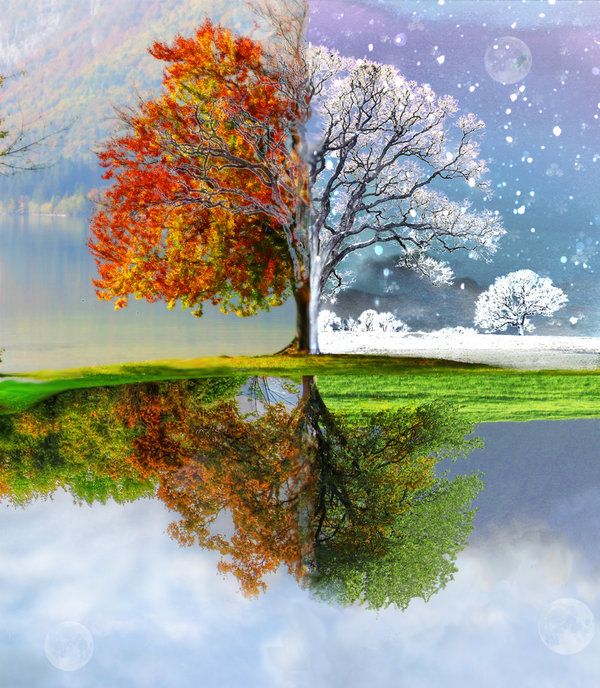
When are the seasons?
There are two main approaches to determining the time limits of the seasons: meteorological and astronomical.
According to the meteorological approach, each season consists of three months and starts on the first day of the first month. Thus, in the Northern Hemisphere, meteorological spring begins on the first of March, summer on the first of June, autumn on the first of September, and winter on the first of December.
According to the astronomical approach, each season begins either on the day of the solstice (when the Sun reaches its northernmost or southernmost point in the sky) or on the day of the equinox (when the Sun crosses the celestial equator). In the Northern Hemisphere, the beginning of astronomical spring is counted from the March equinox, the beginning of summer - from the June solstice, the beginning of autumn - from the September equinox, and the beginning of winter - from the December solstice.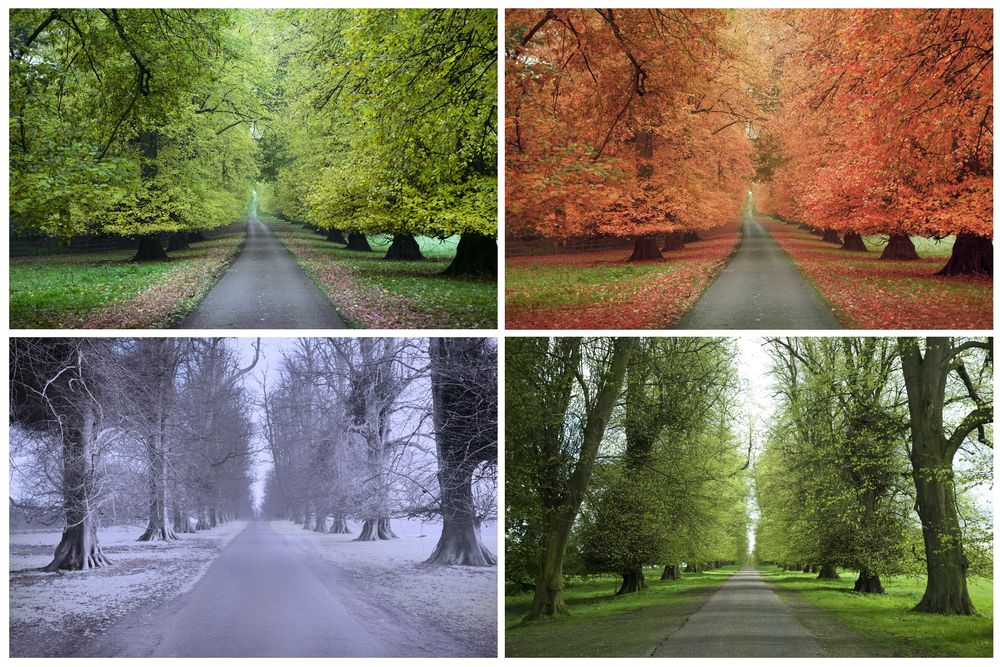 Due to leap years, the dates of the equinoxes and solstices may differ by one or two days each year.
Due to leap years, the dates of the equinoxes and solstices may differ by one or two days each year.
Why does the seasons change on Earth?
Many people think that the seasons change each other because of the ellipticity of the orbit of our planet: when the Earth approaches the Sun, it becomes warmer, and when it moves away, it becomes colder. However, the Earth's orbit is almost circular and does not significantly affect the weather and temperature conditions.
The main reason for the change of seasons is the tilt of the earth's axis . The axis of rotation of our planet is tilted at an angle of about 23.5 degrees with respect to the orbital plane. Most likely, the axis of rotation tilted after the collision of the Earth with another planet about the size of Mars.
Although the tilt of the axis of rotation remains unchanged, the orientation of the Earth relative to the Sun is constantly changing as the Earth revolves around the star. When one of the hemispheres of the Earth is turned towards the Sun, spring and summer come in this hemisphere; the other hemisphere at that moment receives less sunlight, and autumn and winter come there.
When one of the hemispheres of the Earth is turned towards the Sun, spring and summer come in this hemisphere; the other hemisphere at that moment receives less sunlight, and autumn and winter come there.
How do the seasons differ in different hemispheres?
The seasons in the northern and southern hemispheres are opposite. When it is winter in North America, it is summer in South America; when spring comes to Europe, autumn comes to Australia. As you now know, this is due to the fact that the Northern and Southern Hemispheres face the Sun at different times of the year.
Are there seasons on other planets?
The change of seasons is present on all the planets of the solar system, as their rotation axes are tilted. However, the seasons on other planets are different from those on Earth.
Take, for example, Uranus. This planet is tilted at an angle of almost 98 degrees, so that its axis of rotation is almost parallel to the orbital plane. In addition, Uranus takes 84 Earth years to complete one revolution around the Sun.


